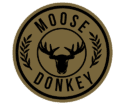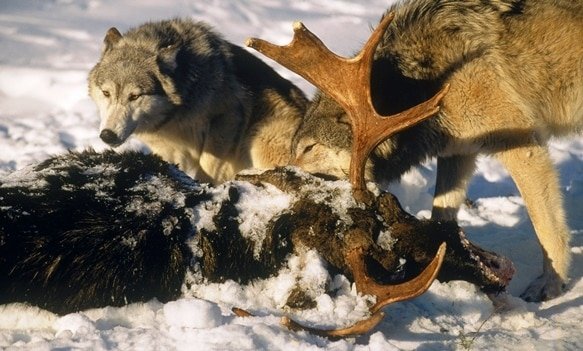When discussing moose hunting, we refer to pursuing and capturing these majestic creatures for sport or sustenance. It’s a time-honored tradition passed down through generations, providing an exhilarating outdoor adventure and a means to procure food and manage wildlife populations. Let’s discuss moose hunting laws and how to stay out of jail.
Hunting Regulations for Conservation and Population Control
Hunting regulations play a vital role in maintaining the delicate balance between humans and wildlife. They ensure that the number of moose harvested is sustainable and doesn’t jeopardize their population in any given area. These rules help prevent over-harvesting, leading to ecological imbalances and even endangered species.
Furthermore, hunting regulations help control the spread of diseases among moose populations by targeting specific animals while minimizing unnecessary harm. Legal moose hunting is essential for wildlife management because it helps maintain healthy ecosystems.
By regulating the number of permits issued, authorities can keep a close eye on population numbers and control them accordingly. Sustainable harvest practices support conservation efforts and play a crucial role in preventing overgrazing by limiting the size of these large herbivores’ herds.
Hunting regulations also provide an avenue for funding important conservation initiatives. The revenue generated from licensing fees supports habitat preservation, research programs, and enforcement efforts to protect moose populations.
It’s important to understand that regulations aren’t meant to discourage hunting altogether; they aim to balance preserving wildlife populations and allowing responsible hunters to enjoy their sport. This ensures future generations will have opportunities to experience the thrill of observing these magnificent creatures in their natural habitats while contributing positively to ecosystem health.
In the next sections, we will delve into the specifics of moose hunting laws across different regions/states/provinces and the various conservation measures, safety regulations, ethical considerations, and penalties in place to ensure responsible and sustainable hunting practices. So grab your hunting gear and explore the fascinating world of moose-hunting laws together!
General Moose Hunting Regulations
Licensing requirements and procedures
Embarking on a thrilling moose-hunting expedition requires a few bureaucratic hoops to leap through gracefully. To participate in the joyous pursuit of these majestic creatures, one must obtain the necessary licenses, for legality is key.
The specific requirements and procedures may vary from region to region but generally involve submitting an application, paying an appropriate fee, and fulfilling any prerequisites such as hunter education courses or firearm safety training. It is essential to abide by these regulations to ensure a lawful and safe hunting experience for all involved.
Season dates and duration
Ah, the sweet anticipation of moose season! Before setting off into the wilderness armed with determination and hope, hunters must acquaint themselves with the official hunting season dates carefully established by authorities.
Season dates include moose behavior patterns, population size, breeding seasons, and weather conditions. It is crucial to respect these temporal boundaries as they serve not only to safeguard moose populations but also to allow for sustainable management practices.
Bag limits and restrictions on gender, age, or antler size
When it comes to legal moose hunting regulations concerning bag limits and other restrictions on gender roles (pun intended), age brackets play an influential role. Often taking into account conservation efforts aimed at maintaining healthy populations in balance with their natural habitat’s carrying capacity.
These regulations dictate specific criteria regarding gender identification (bull or cow), age (gotta let those youngsters grow up!), or even antler size (it’s all about promoting strong genetics!). Compliance with these limitations ensures responsible harvesting practices that guarantee long-term viability for the species and future generations of avid hunters.
Legal weapons and ammunition specifications
Selecting the appropriate weapons and ammunition is vital in this grand game of chase amidst towering forest canopies. Each region has its laws delineating the legally acceptable tools for moose hunting.
From rifles to bows, shotguns to muzzleloaders, hunters must ensure their arsenal aligns with the legal parameters mandated by hunting regulations. Additionally, ammunition specifications also come into play, as certain calibers and bullet types may be prescribed or restricted based on their effectiveness in swiftly and humanely dispatching these magnificent creatures.
Hunters are responsible for adhering to these regulations and guidelines to foster a harmonious coexistence between human hunters and the wondrous wildlife that roams our lands. Remember, my fellow enthusiasts: embrace the thrill of legal moose hunting while respecting the rules that preserve nature’s delicate balance.

Specific Moose Hunting Laws by Region/State/Province
Alaska
Alaska, known for its picturesque landscapes and abundant wildlife, boasts one of the largest moose populations in North America. The state’s vast moose population provides ample opportunities for legal moose hunting.
However, Alaska’s regulations differ depending on the region and the type of hunt. Drawing permits is a popular way to regulate moose hunting in Alaska, where hunters must apply for a limited number of permits through a lottery system.
This ensures that hunting pressure remains sustainable and controlled. On the other hand, general season hunts are also available in certain areas with less hunting pressure and more accessible populations.
Additionally, Alaska recognizes the importance of subsistence hunting for rural Alaskans who depend on wildlife as a source of sustenance. Therefore, specific regulations are in place to govern subsistence hunting practices while ensuring sustainable harvest levels.
Maine
Moose hunting holds great historical significance in Maine’s cultural fabric. With its dense forests and thriving moose population, Maine has become a sought-after destination for local and out-of-state hunters. Maine implements a lottery system for obtaining a moose permit to maintain an appropriate balance between conservation efforts and recreational opportunities.
This system allows individuals to apply for various state zones, each with allocated quotas based on scientific research and population management strategies. By limiting the number of permits issued annually, Maine ensures that the moose population remains stable while granting lucky hunters an opportunity to partake in this cherished tradition.
Conservation Measures in Moose Hunting Laws
Population Management Strategies Based on Scientific Research
Conserving healthy moose populations is essential for maintaining biodiversity and preserving valuable ecological dynamics within the ecosystems they inhabit. To achieve this, wildlife agencies and biologists employ meticulous population management strategies. Experts can estimate moose populations accurately by conducting scientific research, including aerial surveys, radio-telemetry studies, and data analysis.
This information enables them to set appropriate hunting quotas and bag limits based on the reproductive capacity of moose herds. These conservation measures ensure the long-term sustainability of moose populations while allowing for regulated hunting activities.
Monitoring Methods to Ensure Sustainable Harvest Levels
Monitoring the harvest levels is crucial in determining the success of existing regulations and their impact on moose populations. Wildlife agencies collaborate with hunters to collect important data such as age, gender distribution, antler size, and overall health condition of harvested moose.
Through mandatory reporting systems and biological sampling programs, valuable insights are gained about population dynamics over time. This information plays a pivotal role in adjusting hunting regulations to maintain sustainable harvest levels while prioritizing moose herds’ long-term health and stability.
Collaborative Efforts with Wildlife Agencies, Biologists, and Hunters
Conservation efforts in moose hunting laws involve a collaborative approach among wildlife agencies, biologists, and hunters. Regular communication between these stakeholders is essential for addressing emerging challenges or concerns regarding wildlife management practices.
Engaging hunters as active participants in data collection initiatives or offering opportunities for education on conservation principles creates a stronger bond between wildlife enthusiasts and regulatory bodies. By fostering this collaboration, there is an increased likelihood of successfully implementing effective hunting regulations that balance ecological sustainability with recreational pursuits.
Safety Regulations for Moose Hunters
Mandatory Hunter Education Programs
Ensuring safety during hunting activities is paramount. Many regions require hunters to complete mandatory education programs before obtaining licenses or permits.
These programs provide comprehensive training on firearm safety, responsible hunting practices, understanding local regulations, wilderness survival skills, and ethical considerations. By imparting practical knowledge and promoting a culture of responsible hunting, these programs aim to reduce accidents and promote a safe hunting experience for both hunters and those sharing the wilderness.
Requirements for Wearing Fluorescent Orange Clothing
Many hunting regulations stipulate that hunters must wear fluorescent orange clothing to enhance visibility in the field. This requirement helps prevent accidental shootings by allowing hunters to distinguish between human targets and potential game animals.
Wearing this vibrant color increases safety not only for the hunters themselves but also for others who may be present in the vicinity. By adhering to this regulation, hunters contribute to maintaining a secure environment while engaging in their beloved pastime.
Precautions While Field Dressing or Transporting Harvested Moose
After successfully harvesting a moose, proper handling techniques are essential to ensure personal safety and maintain meat quality. Regulations often provide guidelines on properly fielding, processing and transporting harvested moose.
These precautions include using appropriate tools, following hygienic practices to prevent contamination or spoilage, and securing permits for transporting games across state or provincial lines when necessary. These measures serve not only to protect wildlife resources but also to safeguard public health by reducing the risk of diseases associated with improper handling or transportation of meat.
Ethical Considerations in Moose Hunting Laws
Fair Chase Principles and Ethical Hunting Practices
Ethics play a significant role in shaping hunting regulations related to moose hunting. Adhering to fair chase principles ensures that hunts are conducted within reasonable boundaries, respecting both the animal being pursued and the integrity of the hunt itself.
Regulations often prohibit certain practices, such as using aircraft or motorized vehicles during hunts or hunting from stationary positions near baited areas. By embracing ethical hunting practices rooted in fairness, respect for wildlife, and a genuine connection with nature, hunters contribute to preserving hunting traditions and conserving moose populations.
Prohibitions Against Wasteful Killing or Trophy Hunting Mentality
Moose hunting laws commonly address concerns related to wasteful killing or trophy hunting mentalities by implementing strict regulations. These regulations often require hunters to utilize as much harvested animal as possible, discouraging wanton waste.
Laws may set guidelines on mandatory retrieval of edible portions, donating surplus meat to food banks or charitable organizations, and minimizing unnecessary harm during field dressing or processing activities. Moose hunting laws align with broader conservation objectives by promoting responsible harvesting practices and discouraging trophy hunting mentalities that prioritize antler size over overall ecological balance.
Penalties for Violating Moose Hunting Laws
Fines, License Suspension, or Revocation Consequences
Penalties are enforced when violations occur to deter individuals from engaging in illegal activities such as poaching or violating hunting regulations. These penalties may include fines proportional to the severity of the offense, suspension or revocation of hunting licenses, or points systems that accumulate for repeated violations. Strict enforcement conveys that adherence to legal moose hunting practices is crucial for maintaining sustainability and preserving wildlife populations for future generations.
Potential Criminal Charges for Poaching or Illegal Activities
In cases involving deliberate poaching or egregious violations of moose hunting laws, criminal charges can be brought against offenders. These charges may lead to imprisonment depending on the extent and severity of the illegal activities. Authorities demonstrate their commitment to protecting wildlife resources and deterring illegal practices that undermine conservation efforts by treating poaching and other serious offenses as criminal acts rather than mere misdemeanors.




